Kerala is home to numerous traditional art forms and has a rich cultural heritage which remains unknown to the world. Yodha Cultural Village showcases a few such art forms. They offer a range of cultural programmes and events focusing on various art forms of Kerala including the traditional arts such as Kathakali and Kalarippayattu.
The mission of Yodha Cultural Village is to provide visitors an understanding of Kerala’s cultural heritage and enhance their appreciation of the achievements of its people. Their programmes also provide a peep into Kerala’s history and helps obtain an understanding of the prevalent social structure.
Yodha Cultural Village offers cultural programs every evening in Kalaripayattu and Kathakali. Since both arts deserve special attention and must be dwelt with in detail, this article will be featured in two parts with the first part featuring Kalaripayattu and the next dwelling upon Kathakali.

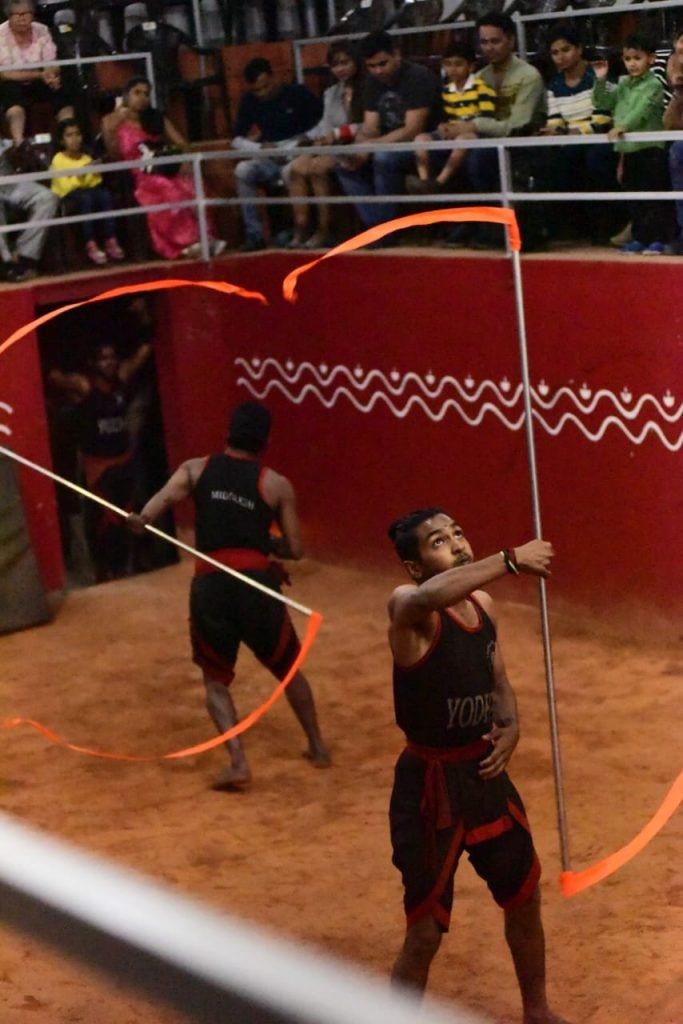
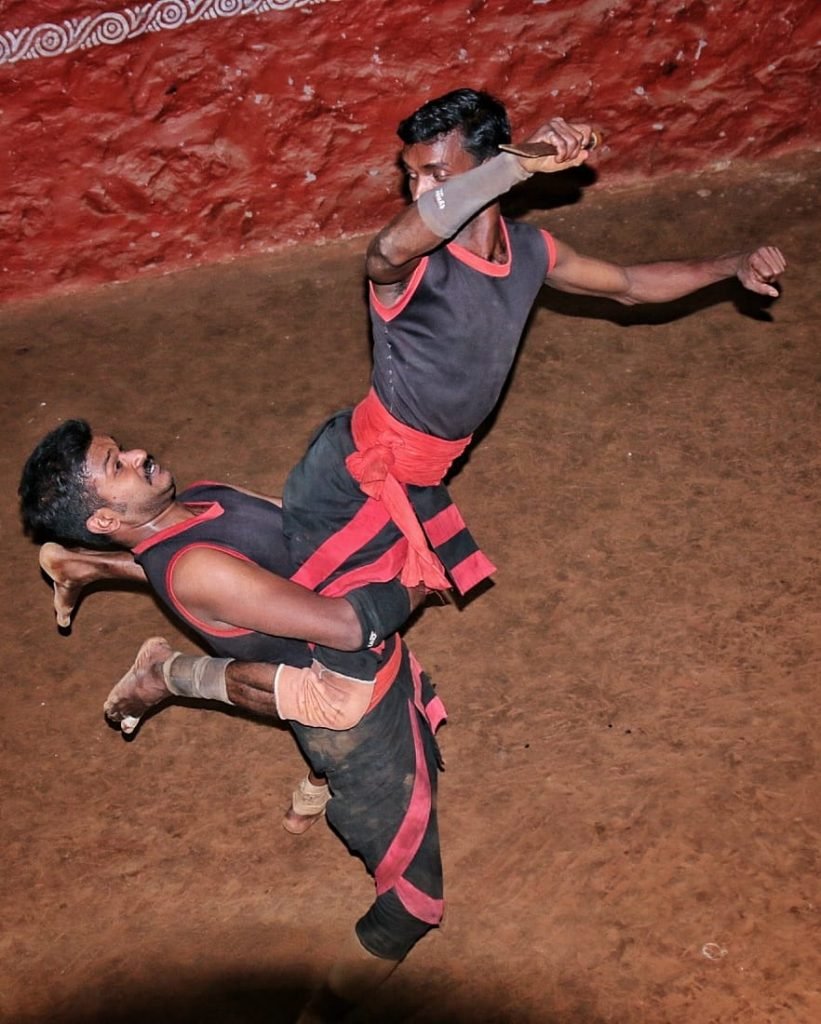
Kalaripayattu also known as Kalari is an ancient Indian martial art that originated in South India. Kalaripayattu is is one of the oldest surviving martial arts in India. Kalaripayattu was designed primarily for the battlefield of yesteryears. The word Kalaripayattu is a combination of two words – kalari (battlefield) and payattu (training exercises), which is roughly translated as “exercises in the arts of the battlefield” with weapons and combative techniques that are unique to Kerala.
The Kalaripayattu demonstrated at Yodha Cultural Village includes strikes, kicks, grappling, preset forms and weaponry. The suppleness of the body and the swiftness of movements exhibited by the warriors of Yodha Cultural Village are indeed mesmerizing.
The programme begins with Pulliangam which focuses on the graceful movements of the warriors like a Tiger (Pulli) hunting its prey.
The second session is devoted to Silambattam or the art of twirling a bamboo pole to protect the warrior and also disarm the enemy. The pole is rotated in a pattern reminiscent of a spider’s web and reveals the dexterity and wrist control of the warrior. This was followed by the warrior’s expertise of twirling two sticks one in each hand which requires more control to ensure that the two sticks do not clash with each other but ward off multiple enemies at the same time.
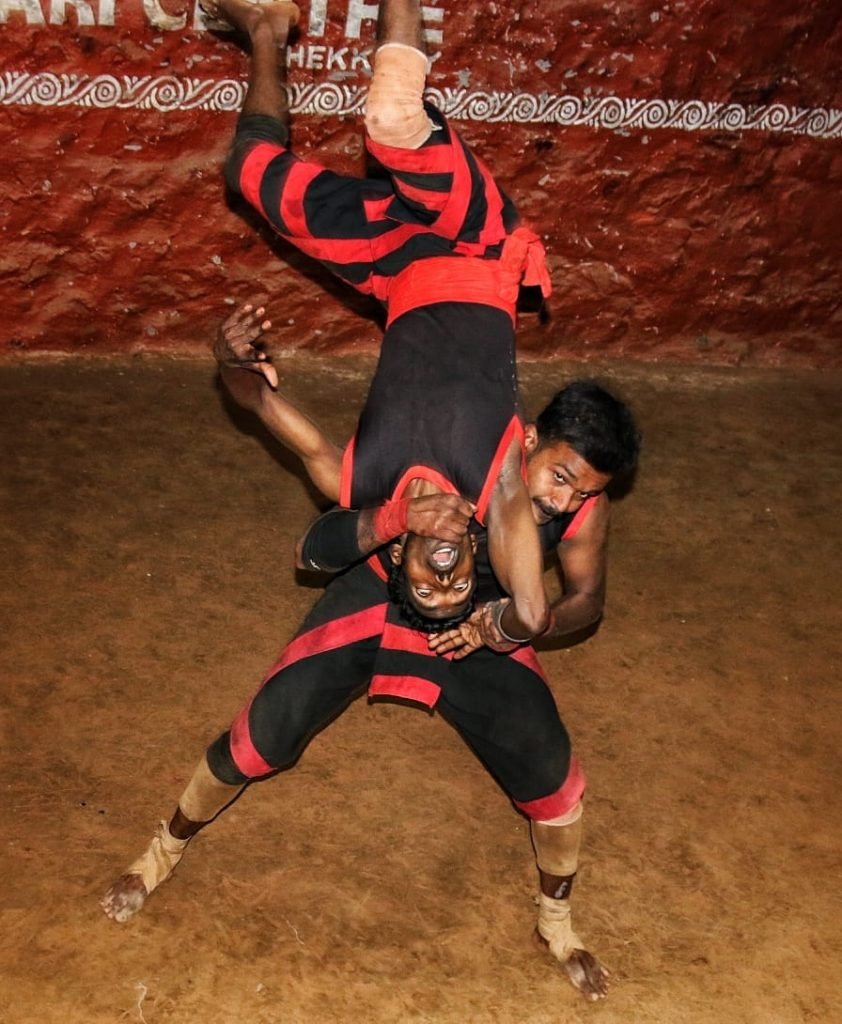


Following this session two warriors then sparred with each other. While one had a sword the other faced him with bare hands while deftly avoiding the blows rained upon him and disarming the other.
Later, the warriors sparred among themselves with a knife and stick and then demonstrated their skills with sword and shield as well as spear and sword.
One of the highlights of the evening is the use of a scarf by a warrior to battle heavily armed opponents and disarm them as well as tie them up using the scarf as a weapon. This exercise will come in for women who can use their scarves to protect themselves and ward off their enemies.
Yet another highlight was the jumps of the skilled warriors through hoops and over the prone bodies of many warriors including visitors who were invited to the arena to showcase the long distances that the warriors could leap.
The next session was the use on the Urmi or the coiled sword which when struck could stretch to long distances. Twirling the Urmi is in itself a complex art and the warrior must be truly skilled to avoid hurting himself.
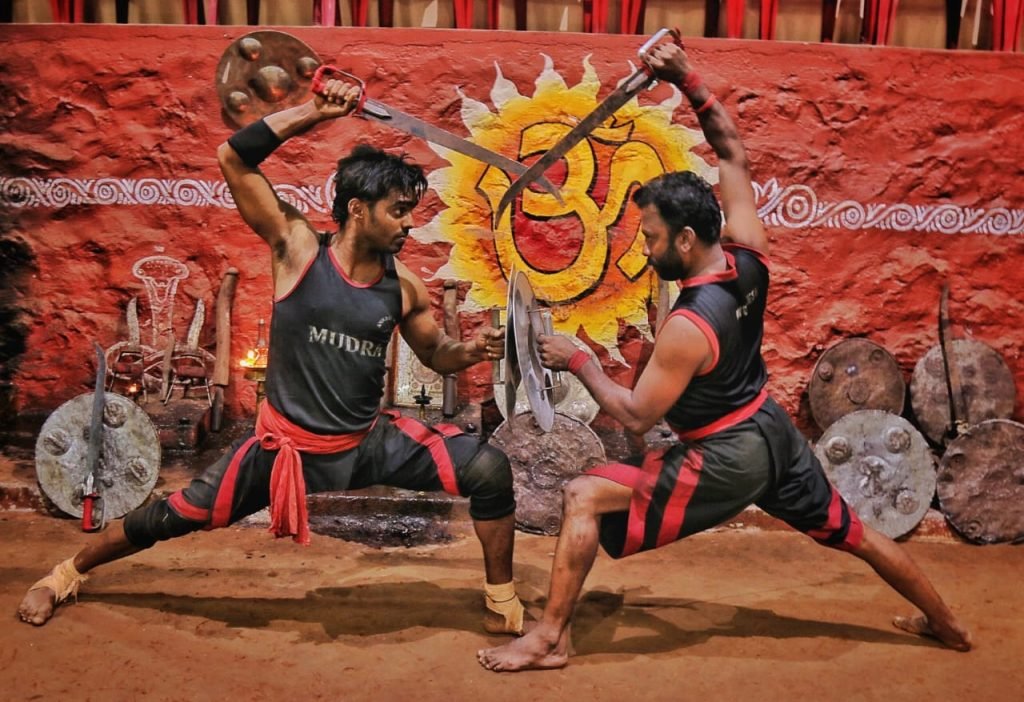

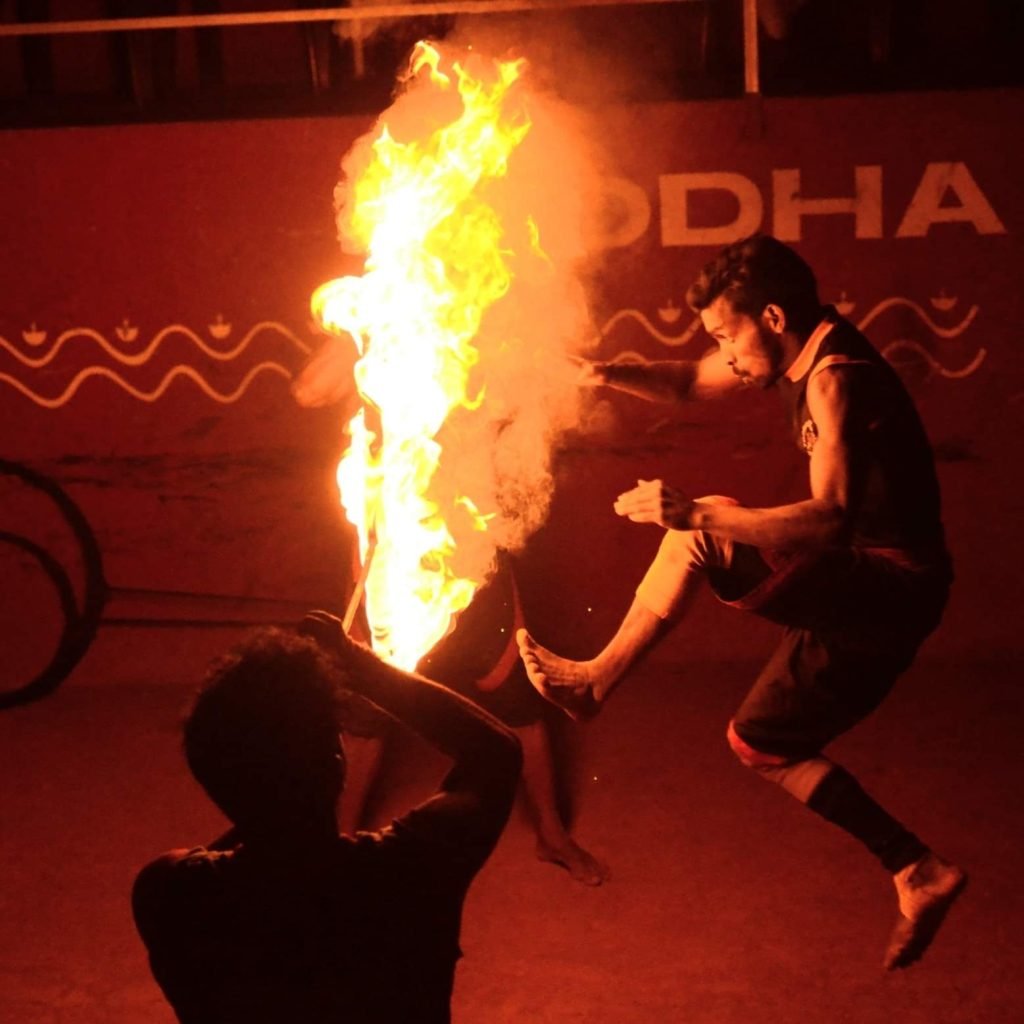
The warriors also demonstrated their skills with fire torches and displayed movements in complete darkness. They twirled poles with fireballs lit on both ends and the patterns they wove in the dark auditorium were indeed a sight to behold. A warrior also jumped through multiple hoops of fire leaving the audience tense and excited.
The programme concluded with a performance of the Korean form of Jwibulnori which had sparks flying.
We at “Kumily Calling” do not want to elucidate further and give away more details as it is best to personally experience the performance at Yodha Cultural Village rather than read about it. Therefore we request all Kumilities and visitors to Kumily to take some time off and visit the Yodha Cultural Village for an exciting evening.


